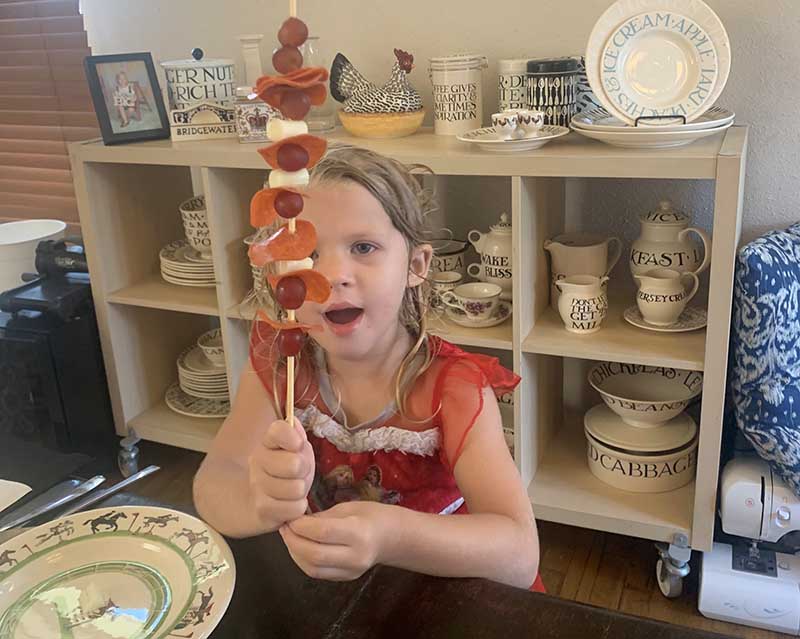Healthy food for at-home students starts with this
By Michael Merschel, American Heart Association News

You're trying to work. Your kids are attempting online learning. Everyone wants something to eat. And you're losing your mind.
Experts say one ingredient can make all the difference in this situation.
Grace.
"You know, this is not easy," said Caree Cotwright, an assistant professor in the University of Georgia Department of Foods and Nutrition in Athens. "Even with all the skills I have as a registered dietitian, there's a lot of planning and a lot of volleying between Mom and Dad that has to go on in order for the kids to keep a schedule and be able to have things that are healthy."
Alexis Wood, assistant professor of pediatrics-nutrition at Baylor College of Medicine in Houston, agreed. "Parental stress and guilt is not going to help anything," she said. "It's going to make it worse, if anything."
Wood and Cotwright speak from both professional expertise and personal experience. Wood, lead author on a recent American Heart Association report about how to help children develop healthy eating habits, has a daughter, 4, and son, 7. Figuring out meals hasn't been easy.
When the pandemic started, she tried to do it all. She focused on her children all day until 3:30 p.m., when her boyfriend would take over so she could work. "Then I would cook dinner and serve it. Put the kids to bed. Clean the house. Prepare the homeschooling for the next day." She made it work for several weeks but was burning out.
Now, rigorous planning helps everyone stay on track. And she follows the advice in the report she helped write – which says the best way to help children develop their own healthy eating habits is to focus her energy on providing an environment that "covertly" sets boundaries around food, such as keeping regular meal times and deciding what child-friendly foods her children have access to.
Wood combats unhealthy snacks by restricting the grocery list. Then, she lets her kids make choices from the healthy options that do make it home. By keeping mostly healthy foods in the house, children can "do the work" by selecting and serving foods – and this has freed up some of her responsibility. Dinner times look different than before the pandemic, but she's learned "that for kids, not only do they not mind if you just put random foods on the table – they actually love it."

One desperate evening, Wood set out leftover chicken, fruits, cheese and whole-grain bread and let her kids build their own plates. "And they thought it was the greatest."
Cotwright has daughters who are 6, 4 and 2. When making her shopping list, she asks her girls what fruits they'd like. Those become snacks for the week.
But Cotwright, who has written about ways for daycare providers to encourage healthy eating, said it's important to have realistic expectations for healthy eating.
She had to adjust her own approach during the early days of the lockdown, when she thought she needed to cook a full, hearty breakfast each day. By 10 a.m., her girls still wanted snacks.
She realized, "There is no way I can keep this up." So, she asked her kids what they liked. Breakfast now might include a whole-grain cereal with low-fat milk or a boiled egg.
Planning helps ease the stress of meal preparation, Cotwright said. Mondays might be good for weekend leftovers; Tuesday is always Taco Tuesday. "My kids love it. My kids eat it. Doesn't take me long." And she doesn't have to stress about coming up with an idea.
She also cooks whenever her schedule allows. "Just because you eat at 6 doesn't mean you have to cook at 5:30."
For drinks, each daughter has her own water bottle. "I'll cut up lemons and limes. If they want to put those in there, they can. If they don't, they don't have to. But they sip off of the water bottle all day, and then it saves me in not having wash a ton of cups."

Dr. April Spencer, a surgeon in private practice in Atlanta, is the primary caregiver for Taylor, 10, and Tye, 8. The kids offer ideas for snacks, which might include bowls of fruit or kid-friendly charcuterie, or grazing boards, with fruit, cheese and protein. (You can see an example on Spencer's Instagram feed.)
Is being in charge of your own choices overwhelming to a kid?
"Not really," said Taylor, a self-assured fifth grader.
"I kind of miss school lunches because we get, like, a lot of options," she acknowledged. "But I like having home school, because we can just, like, go to our refrigerator or our pantry to get any snacks we want." She particularly likes the veggie burgers her mom makes for lunch.
The family's success fits with Wood's professional advice.
"The goal, in a nutshell, is to try to control the environment. But not the child."
And, she added: "Cut yourself some slack."
If you have questions or comments about this story, please email [email protected].





